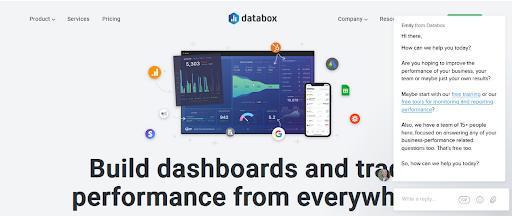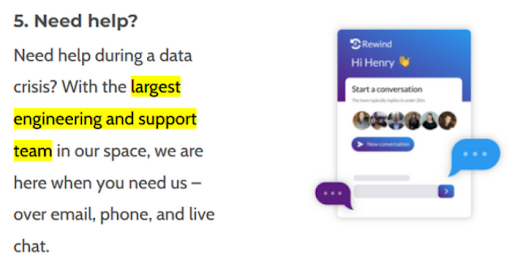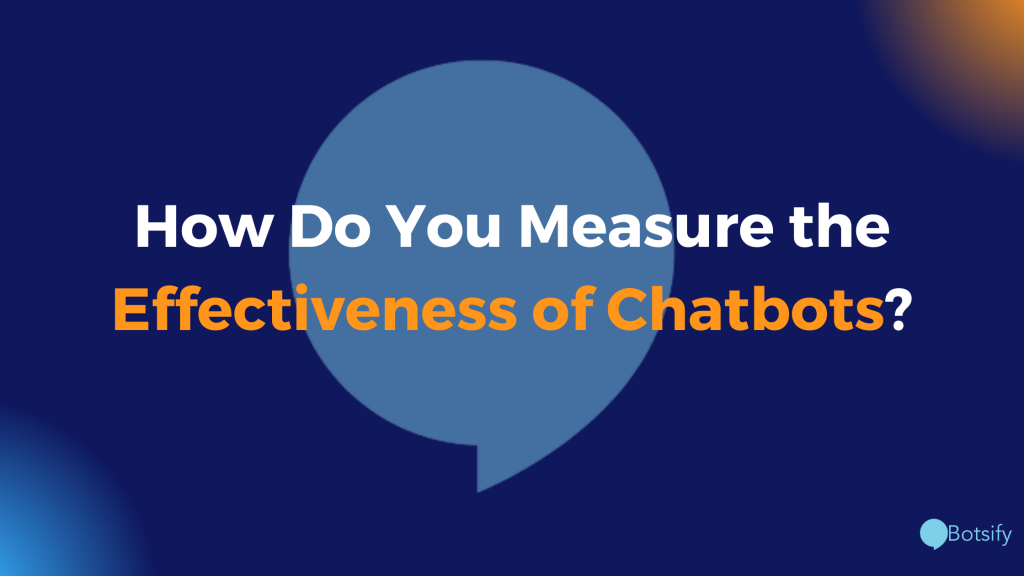Customer Experience is often benchmarked by how easy it is for the buyer to get what they want from your store or website. This can be anything from learning more about a particular product, knowing the discounts on offer, or getting a refund on a transaction gone bad.
Live chat, email, and in-person help are all different ways you can ensure high CX online. But among these, live chat with the help of chatbots allows you the flexibility to scale fast, leave a good impression and increase your efficiency with a fraction of the operational expenses.
However, there’s more to simply setting up chatbots and leaving it there to give you results. The first step is knowing when to introduce it in your marketing cycle, so you benefit from it. Once you set it up, track relevant metrics to ensure you’re using the chatbots to their optimum. And if you have already implemented them in your business, identify areas that need improvement.
Why Do We Need Chatbots?
Chatbots can take over a lot of business tasks that can reduce the strain on your critical resources. But do you need it? Take a look at these benefits before you decide.
Automate Customer Support: Chatbots can reduce the workload, whether you run a small business with a one-person customer support team, or a reasonably large one. Your team can continue with asynchronous communication, while simple routine tasks can be assigned to the chatbot for synchronous communication. This way, it’s easy to monitor customer support that needs priority agents to address time-sensitive matters.
Improve Productivity: Relying on chatbots can help you move through important tasks, saving you a lot of time. Because your team is no longer looking into every customer query, there is a lesser chance of manual error improving query closure rates.
Imitate Human Interaction: Simulating human communication is another advantage of using chatbots. It replicates human conversations, making it easy for your customers to interact with this form of communication, even if they are relatively new to it.
Boost Sales: With intense competition among online businesses, resolving customer queries is essential, especially when customers demand prompt service. Automated customer support improves CX, and it’s easier to bridge this gap and be available for tasks that require immediate attention.
Optimal Resource Utilization: Because you have repetitive tasks managed by a bot, it frees time to reallocate people to other functions that involve decision-making and asynchronous communications.
Are Chatbots Effective?
Chatbots can be used effectively when introduced at the right time during the marketing cycle. A simple floating chatbot at the corner of your site may not work well.

Source: Databox
However, if you start the conversation by offering your free resources like the way Databox does on its website, it makes a first-time user curious to know more. And they further extend a warm welcome with 15+ people on their team to answer any business query.
Another way to use chatbots is to identify how they can help you get leads, support the sales team and further your marketing goals.

Source: Drift
Take the example of Drift. When you check their website, there’s a context of conversational marketing that takes you directly to their core offering. This way, if you communicate your offering and use a CTA like learn more to drive people to ask further questions to the chatbot – it could help drive more conversions.

Source: Rewind
If jumping directly into your core offering is something you’d like to do further in your sales funnel, then consider how Rewind uses its chatbot as an extension of its customer support. With an emphasis on the largest engineering and support team, you’re assured of prompt response through different mediums – email, phone, and live chat.

Sleeknote prefers to give users an option to contact them directly or move ahead on chat. This way, it allows new or existing users to contact them directly for prompt query resolution.
Another way to use chatbots is to connect them to your existing sales videos or sales content online and prompt users to interact further with a strong CTA.
Wherever you decide to use chatbots, ensure you use them strategically to further conversations with your leads for conversions.
Metrics to Suggest Success of Chatbots
Typical sales calls happen over a mix of synchronous and asynchronous communication. In synchronous communication, both the sender and the receiver communicate simultaneously. It makes it easy to assess sales or discovery calls and address any immediate queries or concerns.
In asynchronous communication, the communication may or may not get a response. And if there is communication, it may not adequately meet the sender’s questions. For this reason, chatbots as a synchronous medium work to keep the conversation going.
An instant acknowledgment keeps the user onto the website long enough to pique their interest further and show how your business can solve their pain point.
It creates an excellent first impression and ensures they don’t move onto another similar offering online to solve their immediate business needs. Once you have the chatbot up and working, track these metrics.
Bounce rate: The bounce rate tracks visitors that have landed on your website but haven’t interacted with the chatbot. The higher the bounce rate, the lesser the chatbot’s effectiveness in keeping users on your webpage.
Percent of qualified leads: The number of leads from chatbots to the total leads from your website gives a percentage of qualified leads. A visitor interested in knowing how your product can help them is a qualified lead.
Duration of the engagement: The duration for which the visitor engages with the chatbot to learn about your business is the duration of the engagement. The higher the engagement duration, the more likely the lead conversion is.
NPS score of those who engaged: Net Promoter Score (NPS) is the engagement score of the customers (promoters) who have had a good experience with your product or service and are likely to promote your business to other people. On a scale of 100, a score up to 50 is a mark of good customer service. And anything above 50 is a sign of excellent customer experience that has exceeded expectations and led to customer delight.
Conversions: Leads that have either shown interest in purchasing or purchased via interaction with the chatbot qualify as conversions. While not every lead will convert, it increases the odds of getting a lead into your sales funnel for further communication via phone or email.
Fixing a poor performing chatbot
You’ve probably done all the right things and tracked all metrics, but maybe your chatbots aren’t giving you results. For this, take a step back and identify poor-performing areas.
High bounce transcripts: Often, if your leads are dropping off during a chat conversation, it may be time to check the reason for it. Look into transcripts of high bounce to see at what point they quit. Use analytics tools or CRM tools to equip your team with this data. It could be you are trying to capture too much information from the leads without actually giving them what they want.
Issues with Multilingual Chatbots: If you’ve set up multilingual chatbots, likely, it might not work as you want it to. It could be that your language is not comprehensible. It could also be that it does not match the user intent making it challenging to understand and reply accordingly.
High Demand for Human Agents: If visitors are often resorting to human chats and skipping the chatbot, it could be that your chatbot is misconfigured. The user might constantly be asking simple questions, but without the proper setup, your chatbot could end up confusing the visitor or, worse, causing poor engagement.
Tracking Parameters: You could use a referral parameter to guide the chatbot on user specifications. This way, your user gets specific and personalized messages based on user queries. However, if the referral parameters aren’t giving you an accurate response, you may have to try A/B and multivariate testing to see if visitors respond to different CTAs.
Test on different platforms: Chatbots may perform differently on different platforms. Compare the performance of the same chatbot across various platforms like the website FB Messenger. WhatsApp to see if the platform plays a part in the performance. With this, you’ll be able to optimize the chatbot performance for the platform that gives better results.
Final Thoughts
Keeping pace with new technologies can help move your business up a notch. Chatbots save time and improve customer support across different channels. It also enhances productivity by keeping your customer support free for critical tasks that require human intervention.
Before implementing chatbots in your business, envision where they fit your marketing cycle. Back it up with relevant CTAs to encourage conversation. Once you set it up, align it to your lead generation resources, sales training, or core offering so visitors know right off what you offer and how your business can solve their immediate pain point.
Remember to track metrics that show if chatbots are working for your business. So along with bounce rate, check for NPS to gauge your customer experience. And once you track your metrics, there is a chance there might be a few fixes to tap into misconfiguration or platform compatibility to make chatbots work for you.

